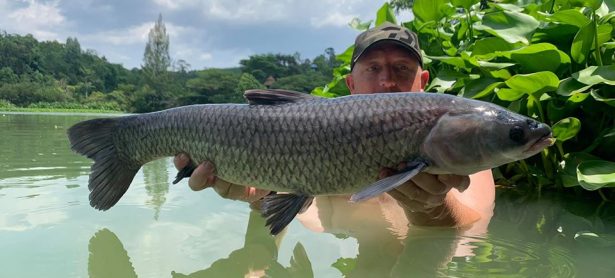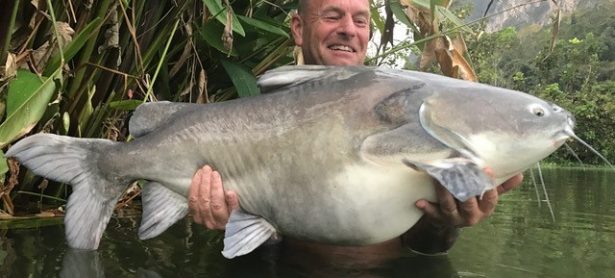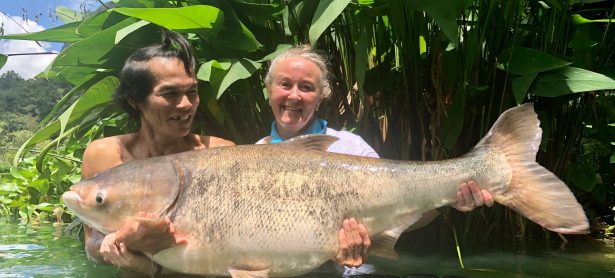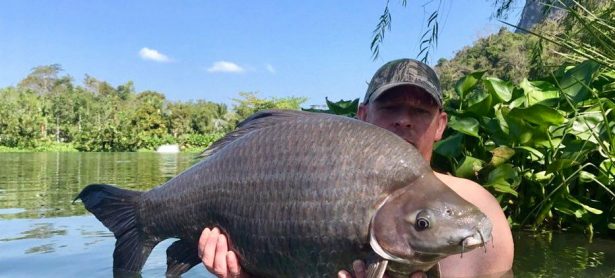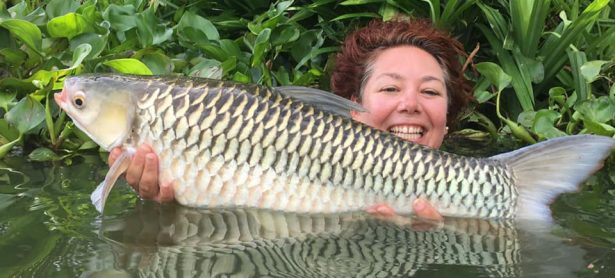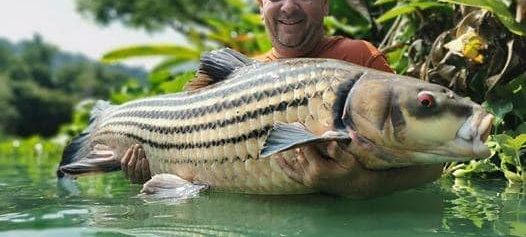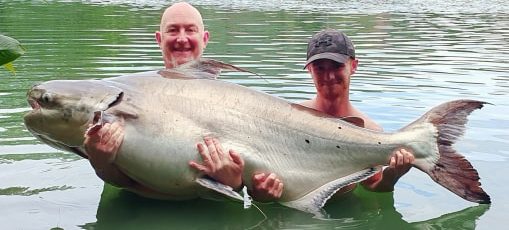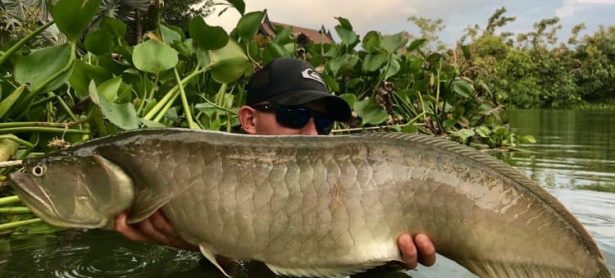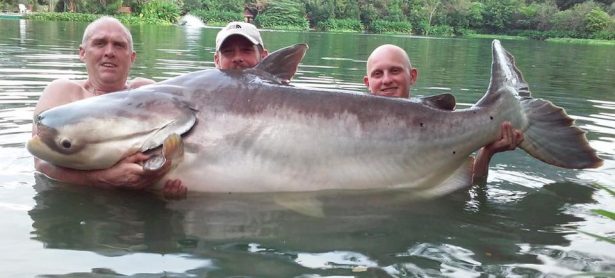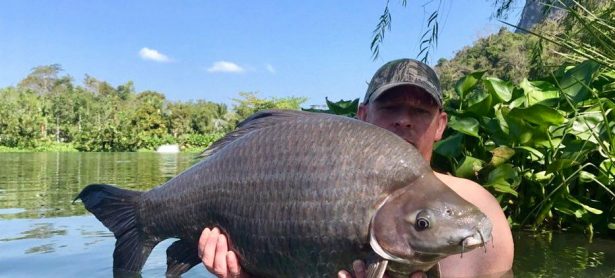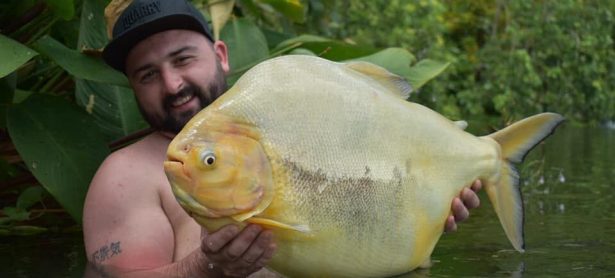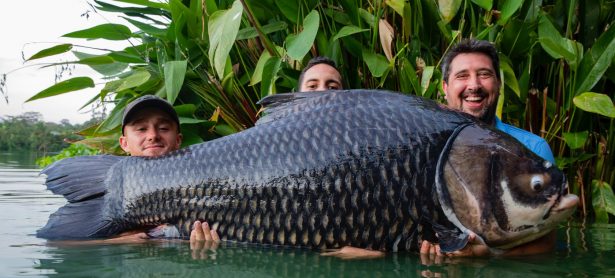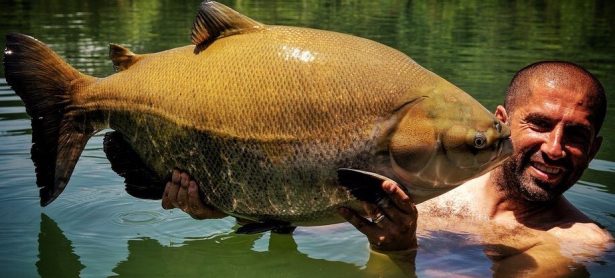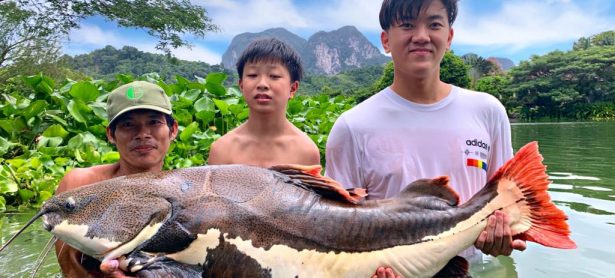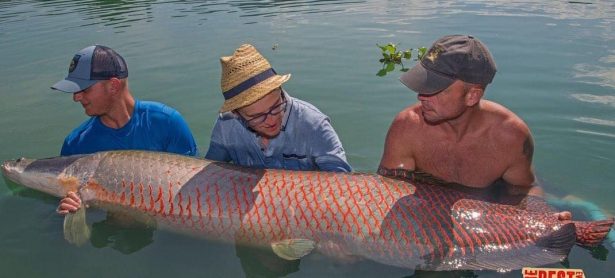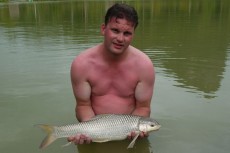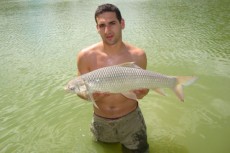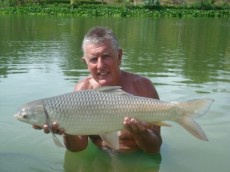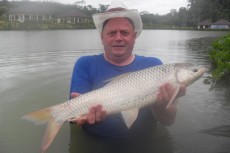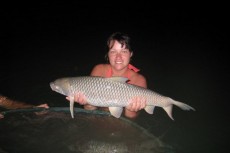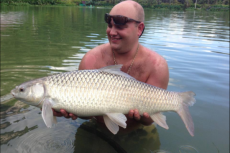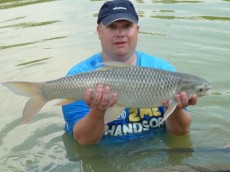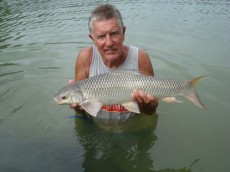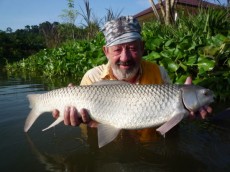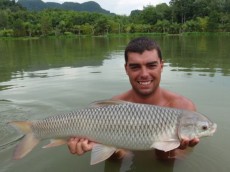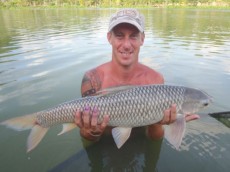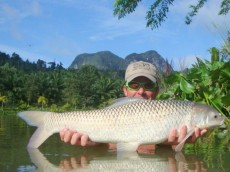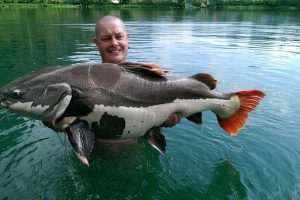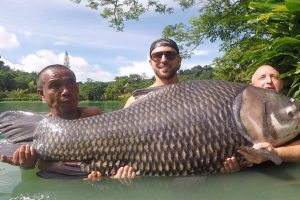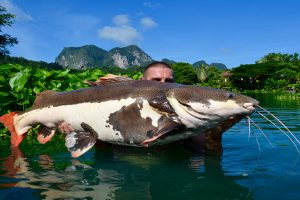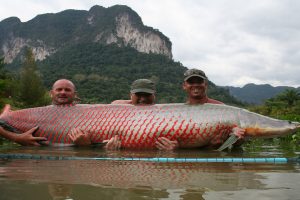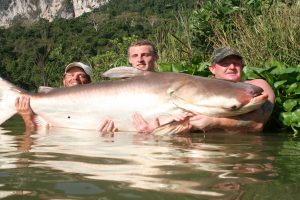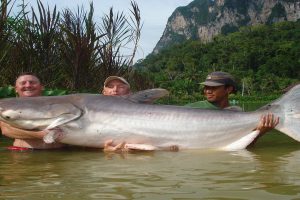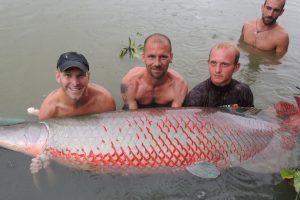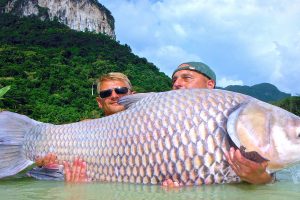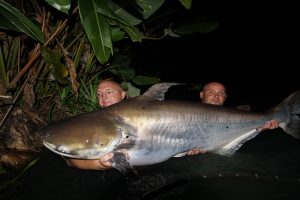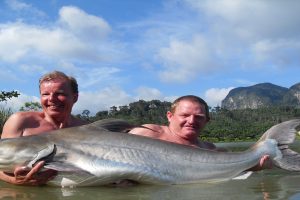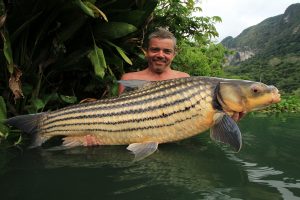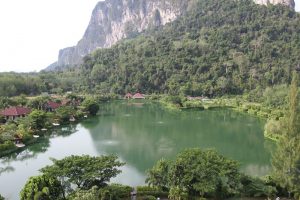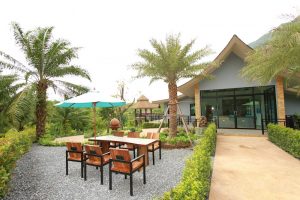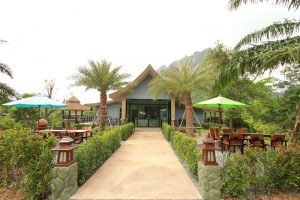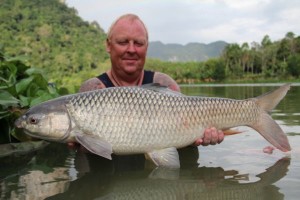 Name: Mrigal carp (Asian grass carp, silver carp, small scale mud carp).
Name: Mrigal carp (Asian grass carp, silver carp, small scale mud carp).
Species: Cirrhinus cirrhosus.
Thai name: Pla nuan tjan.
Max length: 1.2m.
Max weight: 20kg (43lb).
IGFA record: 8kgs (17lb-10oz.) Caught here at Gillhams fishing resorts.
Diet: Water plants, banana, vegetables, insects, shrimp, worm, pellet, boilie, maize and bread.
To fish for our mrigal, try float-fishing the marginal shelf with maize or breadflake alternatively loose feed small pellets, bread crust, floating pellets also work fished as a surface bait. They will occasionally take a dry fly, especially hopper patterns, and again we allow the use of 8wt tackle for this fish, provided you only use floating lines and small flies. When hooked these members of the carp family take off like a steam train, so make sure the drag on your reel is set to 20% of the main line’s breaking strain, or you will be broken off on the first run. Once the mrigal slows down, increase your drag setting. These fish occasionally jump when hooked, so keep a tight line to them at all times. Once netted this chub lookalike is no problem; they are very hardy, need no special care, and there are no sharp or dangerous areas to worry about. However they are a very lively fish, so keep your hands away from their gills, as they will wriggle and jump from your hands given half a chance. Once you have your trophy shot place the fish back in the water and support the fish until it is ready to swim away unaided.
General facts on the mrigal:
The mrigal is a member of the carp family cyprinus. The mrigal is naturally distributed in south Asian countries, Bangladesh, Cambodia, India, Laos, Malaysia, Mauritius, Myanmar, Nepal, Pakistan, Sri Lanka, Thailand and Vietnam. They have been so widely distributed for aquaculture that their natural distribution can no longer be determined. Similar in appearance to the grass carp, the mrigal is small scaled with a smooth scaleless head, and the mouth has a protruding top lip with small pads to the lower top lip. They have a torpedo shaped body, which gives them their speed. In the wild they inhabit fast flowing streams and rivers they can only spawn in swift water over a sandy bottom.
The mrigal thrives in lakes and ponds but has to be artificially spawned. They are the most widely farmed species in South Asia where they are an important component of carp polyculture, and being a very hardy fish they can tolerate low oxygen levels and poor water quality. The mrigal spawns up to three times a year, which is why they are such a popular farm fish. Farmed as a food source the mrigal is a tasty fish, and despite having numerous fine bones it has a high market value, usually used when fresh in fish soup or steamed with ginger, but they are also dried and salted then sold as preserved fish, making them very popular in the poorer areas of Asia where there is no refrigeration. As these fish are farmed and sold at weights around 5kg, their true potential has yet to be seen in a lake such as Gillhams with huge amounts of natural food, plus with it being a still water it will be interesting to see what weights they will attain.



